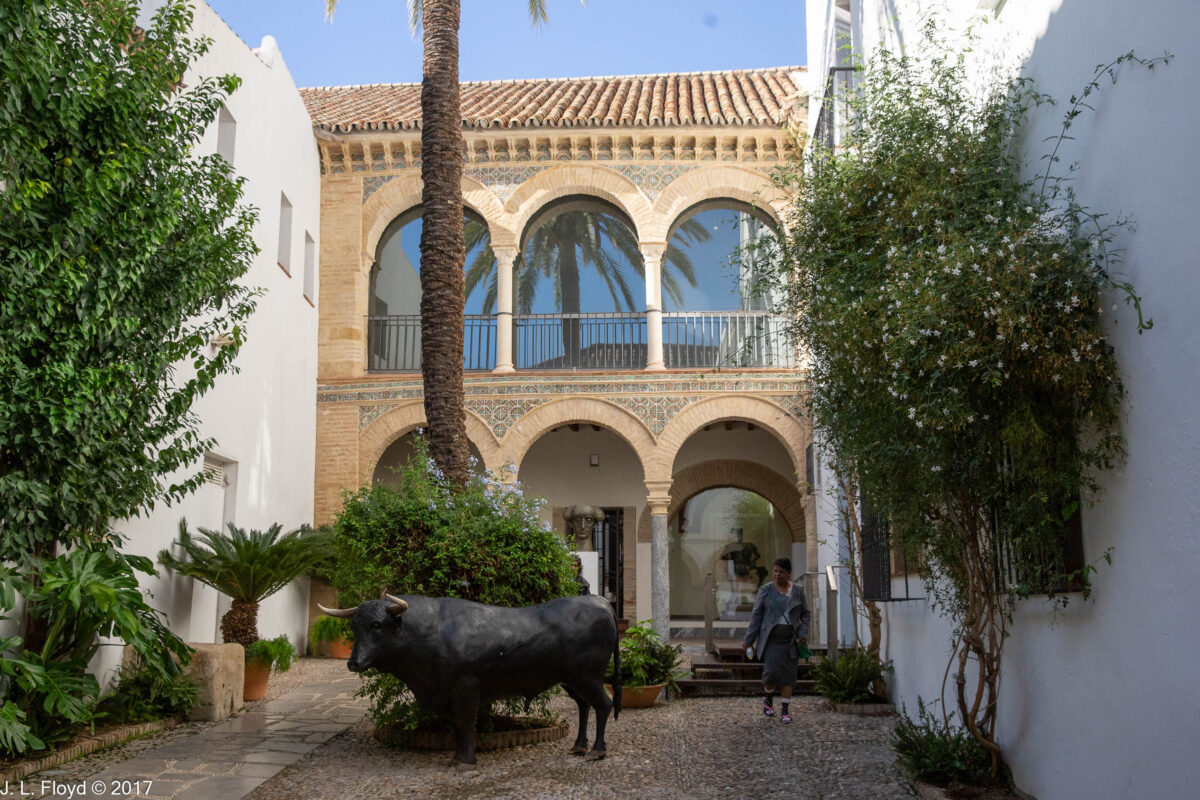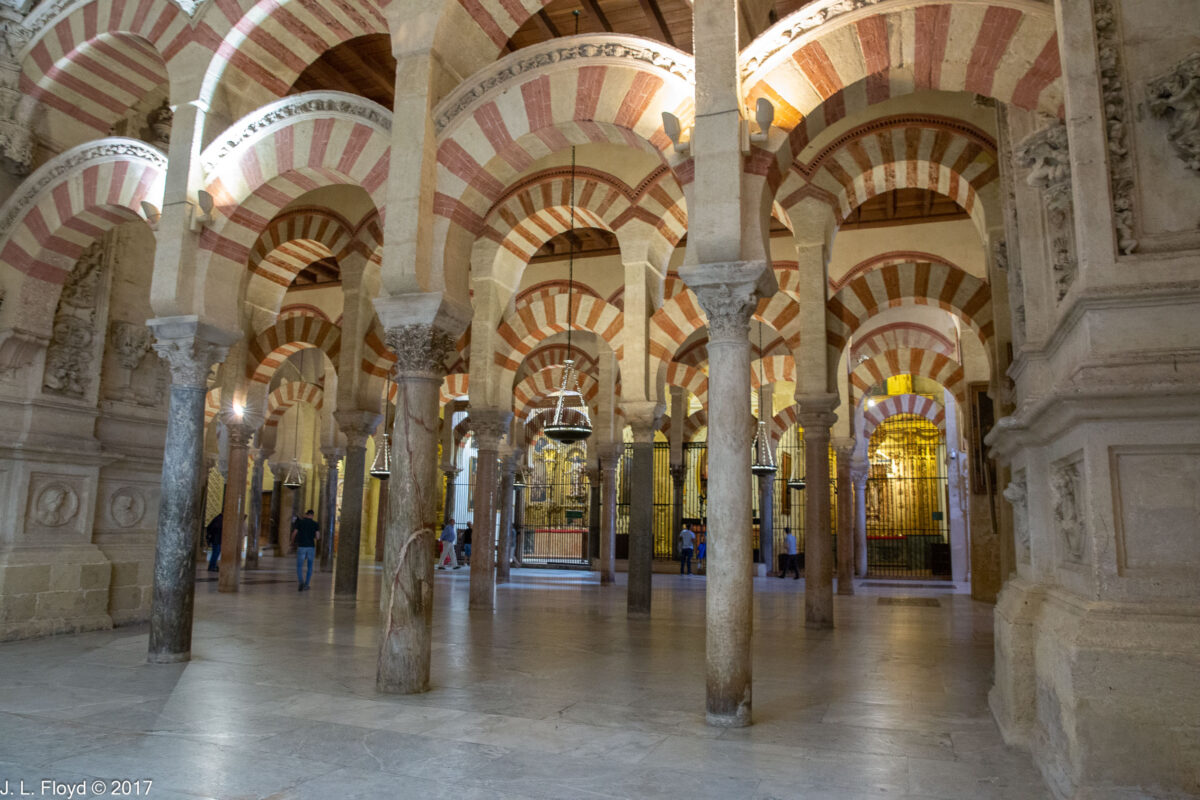Leaving the Mezquita, we immersed ourselves in the narrow streets of the Judería, the old Jewish quarter of Córdoba, and arrived in front of a building which proclaimed itself to be the Faculty of Philology and Letters of the University of Córdoba. It’s difficult to know where the demarcation between the Judería and the rest of Córdoba lies, since for about 500 years no Jews lived there, and few live there today. In any case, there are many establishments in the Judería that have no obvious Jewish associations, such as the University of Córdoba. But it was a quiet and welcoming place to begin our tour of the Judería, as the black cat sleeping beneath a nearby tree confirmed.
It was only a short distance from the University to the Plaza Maimonides. This square, of course, is named after the medieval Jewish scholar and physician Moses ben Maimon, generally known as Maimonides, who was born in Córdoba in 1138. He did not live there long, but there is a monument to him in the square. In 1148 the Almoravids, the Berber dynasty which had ruled al-Andalus for a century, were replaced by a less tolerant regime, that of the Almohads, who demanded that all Christians and Jews in Córdoba either convert to Islam or emigrate. The family of Maimonides emigrated – first to the city of Fez in Morocco, then to Palestine and finally Egypt. He was trained as a physician and eventually became the court physician to the Islamic ruler Saladin. In the meantime he also became the leader of the Jewish community in Egypt and completed a series of writings which established him as the pre-eminent Jewish scholar and philosopher of the Middle Ages. It’s not surprising that Córdoba would want to claim him as a native son.
Plaza Maimonides is filled with attractive houses, which made it worth a look regardless of its illustrious past associations. In addition to the statue of Maimonides, there is a bust of Muhammad ibn Aslam Al-Ghafiqi (died 1165), an Andalusian-Arab physician and oculist who is credited with the invention of eyeglasses (still called gafas in Spanish).
You wouldn’t expect a Jewish neighborhood to host a bullfighting museum. But that’s where we found the Museo Taurino de Córdoba- in an elegant mansion owned by aristocrats in the 16th century. We also found the Iglesia San Bartolomé. In the year 1391, a huge anti-Jewish pogrom broke out which decimated Jewish communities all over Spain, not least in Córdoba. Many Jews converted to Christianity or emigrated. In the aftermath, with many Jewish houses vacated, a new Christian parish church was established in the Judería on Calle Averroes. It is considered one of the finest examples of Mudéjar art in Spain. Unfortunately, it was closed when we were there, so we were only able to take pictures of the exterior, but a stunning photo of the interior can be found here.
Near the Plaza Maimonides we were ushered into a handsome two-story apartment complex, both stories fronted with arcades formed by elegant arches, surrounding a spacious courtyard paved with river-stone, dotted with trees and shrubs ensconced in graceful planters fashioned from brick-and-wrought iron, and graced with an exquisite fountain near the entry passage. Blue flowerpots, reflecting the Jewish heritage of the location, hung from the railings between the second-floor arches. The complex seemed to epitomize the life-style not only of the old Judería, but of medieval – and modern – Andalusia in general. We should all be so lucky.
The Córdoba Judería incorporates not only residential districts but also part of the downtown area of the city, and we soon found ourselves making our way down a busy street bedecked with hotels, bars, restaurants, boutiques and, of all things, the Museum of the Inquisition. Having been a familiar of the Spanish Inquisition in my salad days, I was anxious to get a look at it, although we did not have time to explore it at length.
Almost before we knew it, we found ourselves back at the Plaza de San Rafael, boarding the bus to continue on to Granada. I regretted having so little time to explore the city which was for many years the supreme jewel of Spain, but I was also thrilled to have beheld it once in my lifetime.

